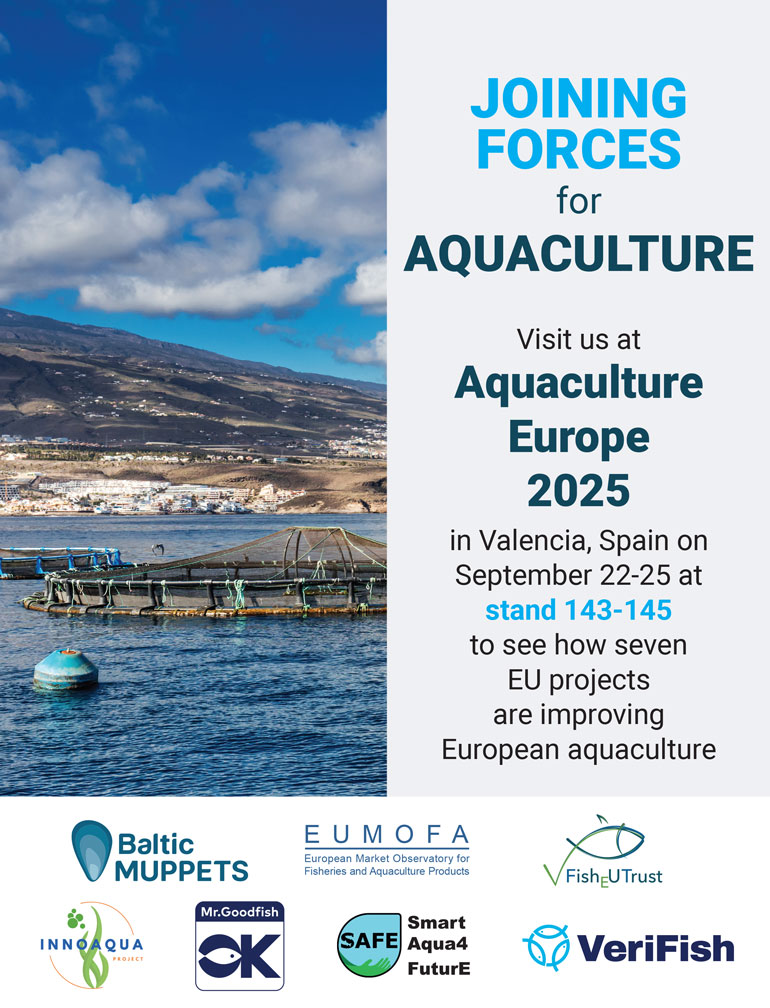
Did You Know? Farmed Fish Can Be Just as Nutritious as Wild Fish
For many consumers, “wild” still sounds more natural — and therefore healthier — than “farmed.”
But when it comes to fish, this idea no longer holds true. Advances in modern aquaculture have transformed how farmed fish are raised, what they eat, and how their quality is measured. Today, farmed fish can be every bit as nutritious as their wild counterparts — and sometimes even more so.
Why the myth persists
The belief that wild fish are nutritionally superior stems from an era when aquaculture feeds were less advanced. In the past, farmed fish diets depended heavily on fish meal and fish oil, often with limited control over composition or quality.
At the same time, consumers tended to associate “farming” with intensive agriculture rather than precision-managed ecosystems.
However, the aquaculture sector — particularly in Europe — has undergone a remarkable transformation. Feed formulation is now guided by nutritional science, sustainability targets, and EU food-safety regulations. This shift has made today’s aquaculture fish nutritionally comparable, safe, and environmentally responsible.
The science behind the nutrition
The nutrient content of fish, whether farmed or wild, is determined primarily by diet and environment.
In the wild, nutrient levels fluctuate depending on what the fish can find to eat. In aquaculture, nutritionists have the advantage of designing feeds that provide a balanced, optimized mix of essential nutrients.
Modern aquafeeds typically include:
-
Marine ingredients such as fish oil or trimmings from certified fisheries (a key source of omega-3 fatty acids).
-
Plant-based proteins like soy, wheat, or rapeseed, used responsibly to reduce reliance on wild fish.
-
Microalgae, an innovative ingredient rich in long-chain omega-3s (EPA and DHA).
-
Vitamins and minerals that support immunity and healthy metabolism.
This precision feeding ensures that farmed fish develop strong, healthy muscle tissue and retain their characteristic fatty-acid profiles — the same properties that make seafood a staple of healthy diets worldwide.
What the evidence shows
Scientific studies confirm that the nutritional profiles of farmed and wild fish are remarkably similar, particularly when it comes to essential omega-3 fatty acids.
According to the U.S. Department of Agriculture (USDA, 2020) and the National Institutes of Health (NIH), farmed salmon and trout often contain equal or higher levels of beneficial fatty acids compared to wild fish. This is because their feed formulations are specifically designed to optimize these nutrients, whereas wild fish diets can vary by season and habitat.
In a review published by the NIH’s Office of Dietary Supplements (Omega-3 Fatty Acids – Health Professional Fact Sheet), researchers highlight that both wild and farmed fish are excellent dietary sources of long-chain omega-3s. In fact, aquaculture offers a controlled, reliable way to maintain these nutrient levels year-round — an advantage in a world where wild fish stocks are under increasing pressure.
The health connection
Omega-3 fatty acids are vital for heart health, brain development, and reducing inflammation. Regular fish consumption has been linked to lower cardiovascular risk and improved cognitive performance across all age groups.
By producing fish that are consistently rich in omega-3s, aquaculture plays a direct role in improving public health.
Beyond fatty acids, farmed fish also provide:
-
High-quality protein with all essential amino acids.
-
Vitamins D and B12, essential for bone strength and energy metabolism.
-
Minerals such as selenium, iodine, and phosphorus.
These benefits make aquaculture a cornerstone of sustainable food security and a valuable complement to wild fisheries.
Safe, sustainable, and traceable
Farmed fish are raised in controlled environments where feed, water quality, and health parameters are continuously monitored.
In Europe, aquaculture production operates under stringent EU food-safety laws, ensuring that every product reaching consumers meets rigorous standards.
This level of traceability and oversight is often more comprehensive than in wild-caught fisheries, where environmental conditions and diet composition can be unpredictable.
The SAFE project (SmartAqua4FuturE) supports these efforts by promoting integrated freshwater aquaculture systems, circular economy approaches, and innovative feed solutions that recycle nutrients and minimize environmental impact. Through collaboration with scientific partners and SMEs across Europe, SAFE demonstrates how sustainable aquaculture can deliver safe, nutritious, and climate-resilient food for the future.
What this means for consumers
When you choose farmed fish produced under certified, responsible standards, you’re choosing:
-
High nutritional value supported by science
-
Strict safety and environmental controls
-
A sustainable source of seafood that relieves pressure on wild stocks
Farmed fish are not a compromise — they are part of the solution.
Learn more
Source:
National Institutes of Health – Office of Dietary Supplements (US Department of Health & Human Services)
https://ods.od.nih.gov/factsheets/Omega3FattyAcids-HealthProfessional/
Further reading:
USDA (2020) studies on omega-3 levels in aquaculture feeds.
SAFE project – SmartAqua4FuturE: Smart and sustainable freshwater aquaculture for Europe.



